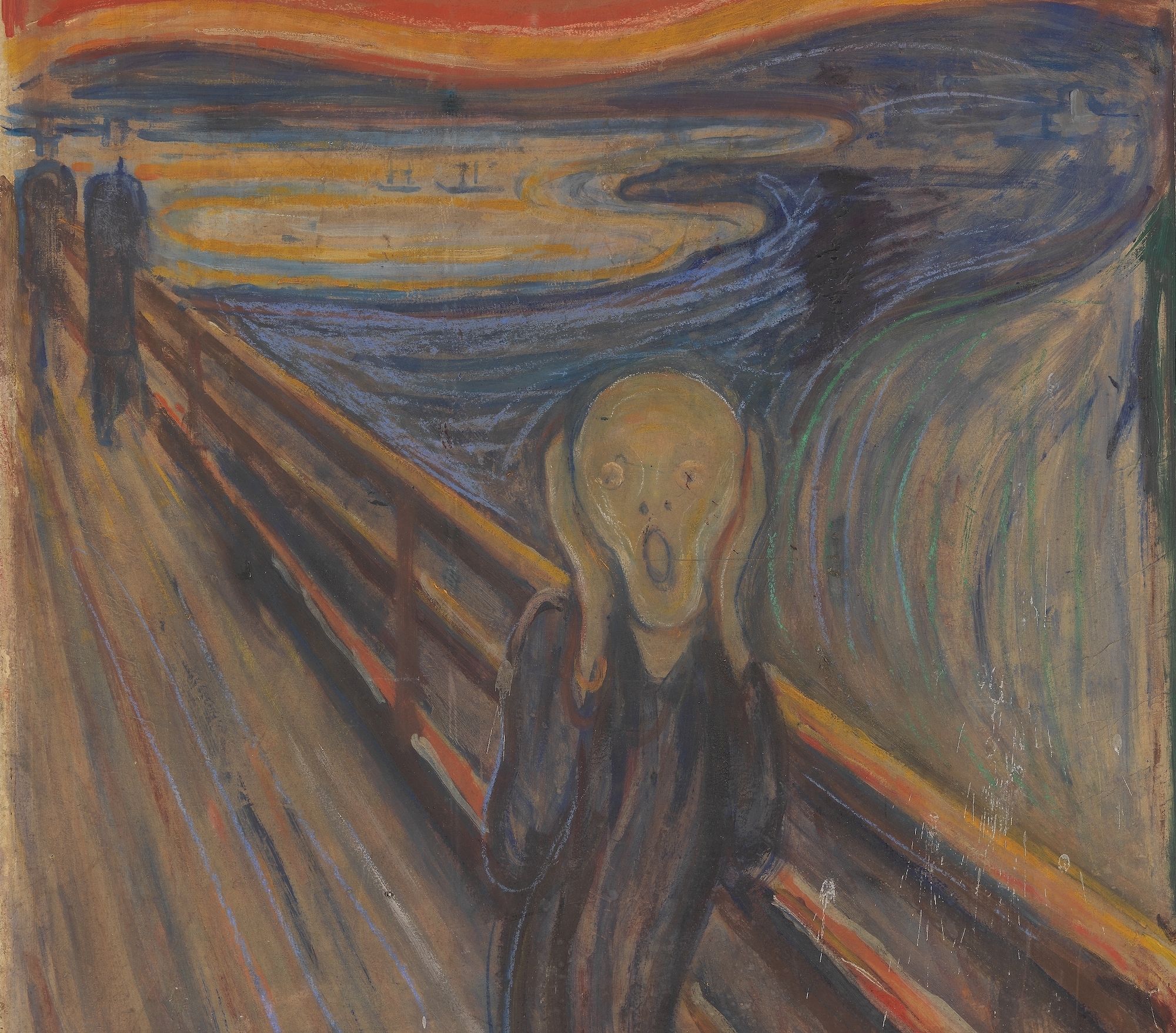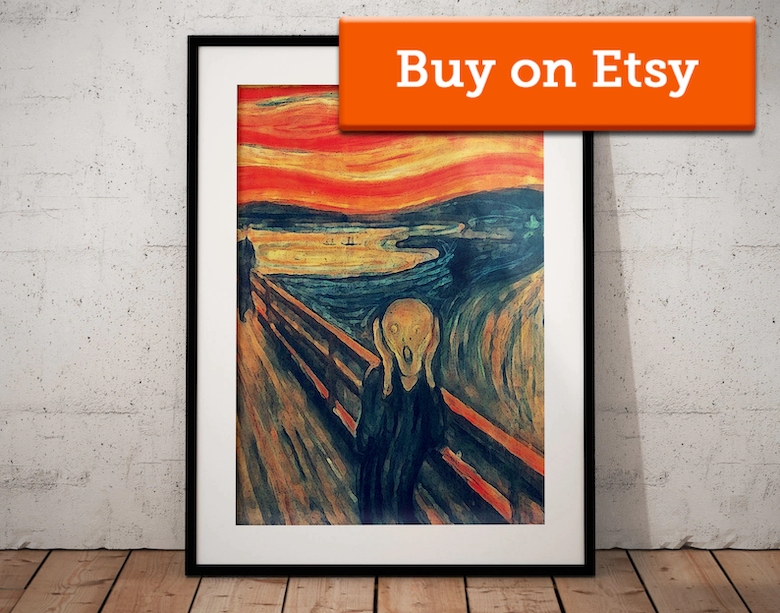In the realm of art, where the curious enthusiast might encounter oodles of horror from Bosch to Warhol, one enduring image has become more relatable than any other, thanks to popular culture and the sheer unnerving nature of the image. Yes, we are talking about The Scream by Edward Munch which, even more than Goya’s Black Paintings, Gericault’s bizarre Severed Heads, or even Warhol’s Electric Chair, has become almost synonymous with horror over the years.
And for good reason.
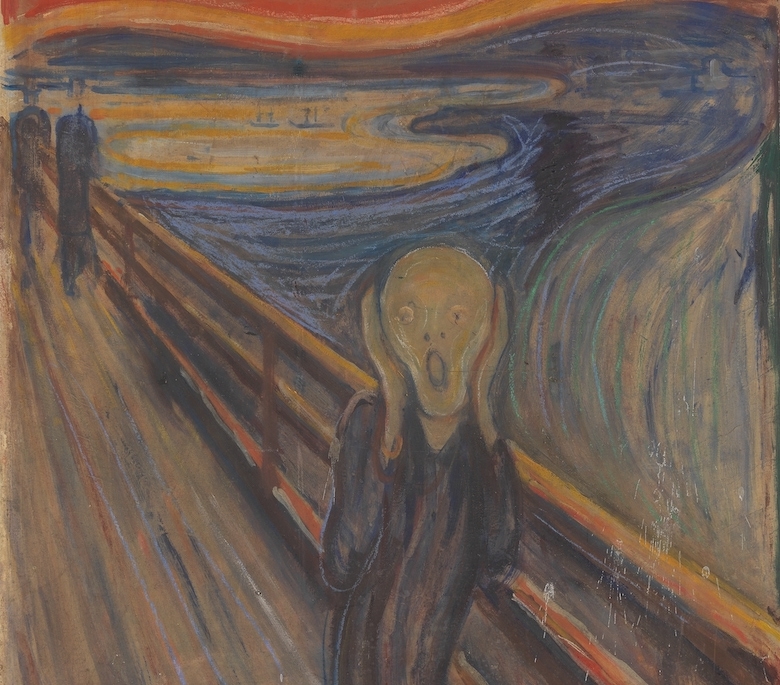
This enduring image has been afforded a horror legacy thanks to repeated features in popular culture and has provided inspiration for many different mediums. Even in the 21st Century, Munch’s horror masterpiece still endures and is likely to endure for many more centuries.
Meaning Behind Munch’s The Scream Painting
From a very early age, Edvard Munch was consumed by grief and misfortune, which affected his formative years and burdened his with a deep depression often. His own state of mind is often seen reflected in his work, which regularly featured themes of fear, pain, and death.
There are five different versions of The Scream: three paintings, a pastel creation, and a lithograph, all created between 1893 and 1917. They were part of a series of paintings known as the “Frieze of Life.”
The inspiration behind the scene in the painting has been rigorously described by the artist himself in a diary entry dated January 22nd, 1892. According to that entry, Munch was walking with two friends during a sunset and the he suddenly stopped to take in the blood-red look of the sky. His heart was filled with anguish and pain and he was forced to lean against the fence, trembling with anxiety. It is in this moment that he felt a “great infinite scream” going through nature.
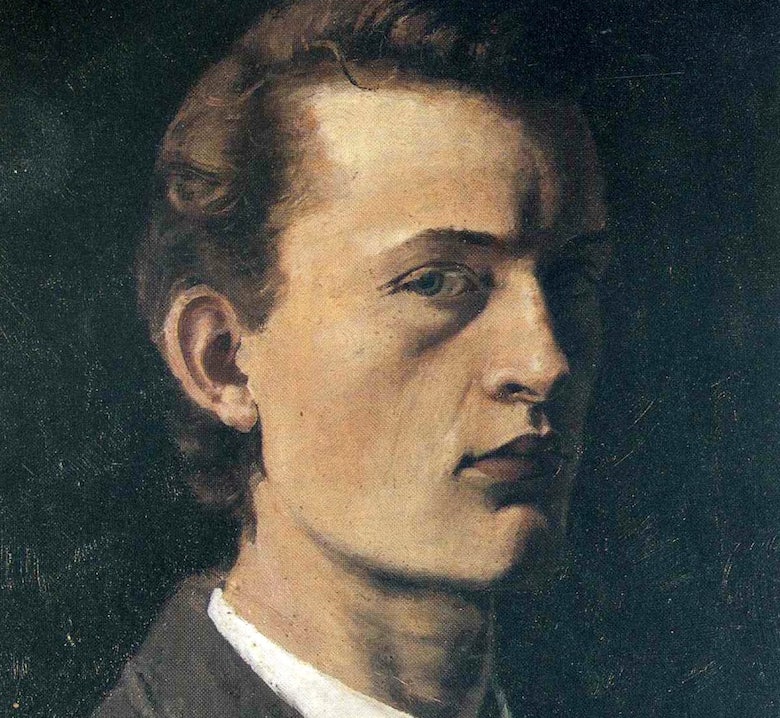
This is almost exactly the scene that is depicted in the painting, where the central figure can be seen under a blood-red sky, standing against a fence, and trying to cover his ears to block out the sound of the scream. While some interpret this scene as having some connection with the eruption of the volcano Krakatoa in 1883 and the resultant natural phenomena, others see it purely as an outpouring of existential angst resulting from the artist’s tortured and troubled state of mind.
The chilling, horrifying face in the painting, devoid of most human features, is eerily similar to a mummy of the Chachapoya people of Peru. More interestingly, detailed scans of the version of The Scream painting on display in Norway reveal an inscription in the upper-left corner, reading “Can only have been painted by a madman”, later found to be penned by Munch himself. Considering the criticism and public question put upon his sanity after the painting was first displayed, this seems like the artist’s sarcastic nod to his critics.
The Scream Painting in Popular Culture
Munch’s horror masterpiece has repeatedly found its way into popular culture, both with the works it has inspired in different mediums and the thrilling history of the painting itself which has been stolen not once but twice. The most famous immediately derivative work would certainly be the Andy Warhol’s “The Scream (after Munch)”, a stripped-down version of the painting imagined in Warhol’s style.
Perhaps the most known and most enduring homage to Munch’s The Scream painting comes courtesy of film director Wes Craven and his Scream series of horror movies. As the story goes, the horrific skeletal mask that horror fans all over the world know and love was initially designed by costume designed Brigitte Sleiertin as a homage to Munch’s vision. (Although it is disputed just how much influence it was.) Wes Craven, who came across this creation, immediately saw its potential and it became the main prop for his horror parody Scream. It is the enduring image of this hollow, soulless mask that cements the legacy of Munch’s painting into horror pop culture.
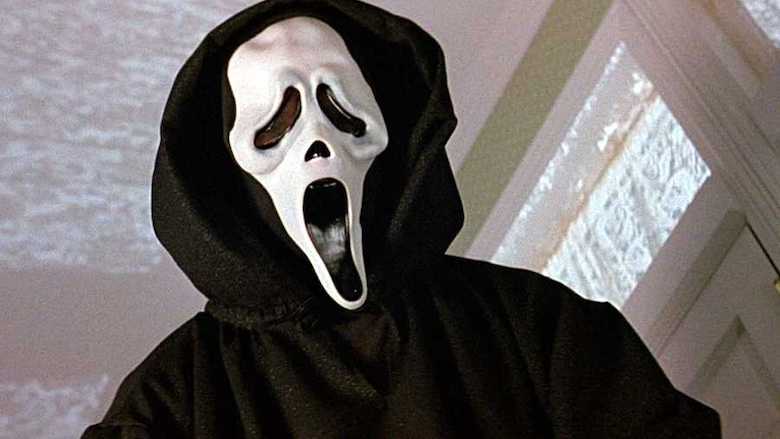
Apart from Craven, other directors have also paid homage to Munch in their own ways. Notably, Tim Burton, remembers and recalls Munch’s masterpiece in his 1982 film Vincent. Another huge nod can be seen in the popular series Dr. Who, where the humanoid villains known as “The Silence” are almost real-life representation of the painting. In fact, a lot of people have also speculated that Lord Voldemort, the scare-inducing villain from the Harry Potter Series, was also modeled after the central character in Munch’s Scream.
Apart from movies, the painting has been referenced many times in cartoons, animation series, Manga, and other mediums and has even inspired memes and merchandise like finger puppets.
The Scream in the Future
With this kind of mass appeal, it is clear that Munch’s masterpiece has stood the test of time and invited fond recalls and reinterpretations in popular culture over the years. While the subject of horror in art involves a deep, rich history dating back hundreds of years, this is one enduring horror masterpiece that is sure to inspire creative and inquisitive minds for years to come.
Last Updated on September 12, 2021.

